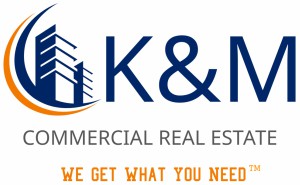Continuing on with part 2 of a series outlining Northern Virginia, Washington D.C., and Maryland real estate trends.
The industrial real estate market in the Washington D.C. metropolitan area, encompassing Northern Virginia, Washington D.C., and Maryland, has witnessed distinct trends and developments in recent years. While these regions are geographically close, their industrial markets have experienced notable variations due to unique economic factors and regulatory environments. This article will explore the divergent trends in Northern Virginia, Washington D.C., and Maryland industrial real estate markets, providing examples of recent closings to highlight the specific dynamics in each region.
Data Centers and Technology Infrastructure: NoVa has established itself as a global data center hub, driven by its strategic location, robust infrastructure, and favorable business climate. The region’s proximity to major fiber-optic networks and high-speed connectivity has attracted significant investments in data centers. Amazon validates this trend in its decision to demolish 11 office buildings in Northern Virginia to make way for new data centers. The company’s decision aligns with the growing demand for data center infrastructure in the region, driven by the exponential growth of cloud computing and e-commerce. This move by Amazon demonstrates its continued investment in Northern Virginia as a critical hub for data center operations.
E-commerce and Last-Mile Delivery: With the exponential growth of e-commerce, Northern Virginia has experienced increased demand for industrial spaces dedicated to warehousing, logistics, and last-mile delivery. The pandemic further accelerated this trend. Amazon’s highly anticipated headquarters, known as “HQ2,” showcases the company’s ongoing dedication to bringing Last-Mile Delivery to the masses with further development.
Adaptive Reuse and Redevelopment: The limited availability of land in Washington, D.C., has led to a focus on adaptive reuse and redevelopment of existing industrial properties. Developers are repurposing obsolete industrial buildings into mixed-use developments, office spaces, or experiential retail spaces. A recent example is Acres Capital Corp. providing $12.85 million in funding for an adaptive reuse project in downtown Washington D.C. The project aims to transform a historic building into a mixed-use development featuring retail and office spaces. This financing represents an investment in revitalizing the urban landscape of downtown Washington D.C. through adaptive reuse projects.
Urban Infill and Transit-Oriented Development: Washington D.C.’s limited land availability and the emphasis on transit-oriented development have driven the trend of urban infill projects. Developers are maximizing existing urban spaces, particularly near transit hubs, to create mixed-use developments with industrial components. For example, Washington Business Journal recently reported on plans for several significant products in Loudoun County, Virginia, near the Silver Line Metro extension. The projects include Rivana, an industrial and commercial development in Sterling; Timberline, a mixed-use development in Ashburn; and Origami, a data center campus in Dulles. These developments highlight the continued growth and investment in the area, driven by the expansion of transportation infrastructure and the demand for industrial, commercial, and data center spaces.
Life Sciences and Biotechnology: Maryland has seen significant growth in the life sciences and biotechnology sectors, driving demand for specialized laboratory and research spaces. One notable example would be BWE, which secured over $93 million in permanent and bridge financing for eight office, medical, and life science buildings in the Washington D.C. area. The funding will support the acquisition and improvement of these properties, reflecting the ongoing demand for office and medical space in the region. This transaction underscores the continued investment and development in the Washington D.C. area’s real estate market.
The industrial real estate markets in Northern Virginia, Washington D.C., and Maryland exhibit distinct trends due to varying economic factors, industry specializations, and regulatory environments. Northern Virginia shines as a data center and e-commerce hub, while Washington D.C. emphasizes adaptive reuse and transit-oriented development. On the other hand, Maryland experiences growth in life sciences, biotechnology, and cold storage facilities. Understanding these divergent trends enables stakeholders to make informed decisions in these dynamic and evolving markets.




I really enjoyed this article—it was insightful and well-written!
The website’s layout is clean and user-friendly.
Saved as a favorite, I really like your blog!